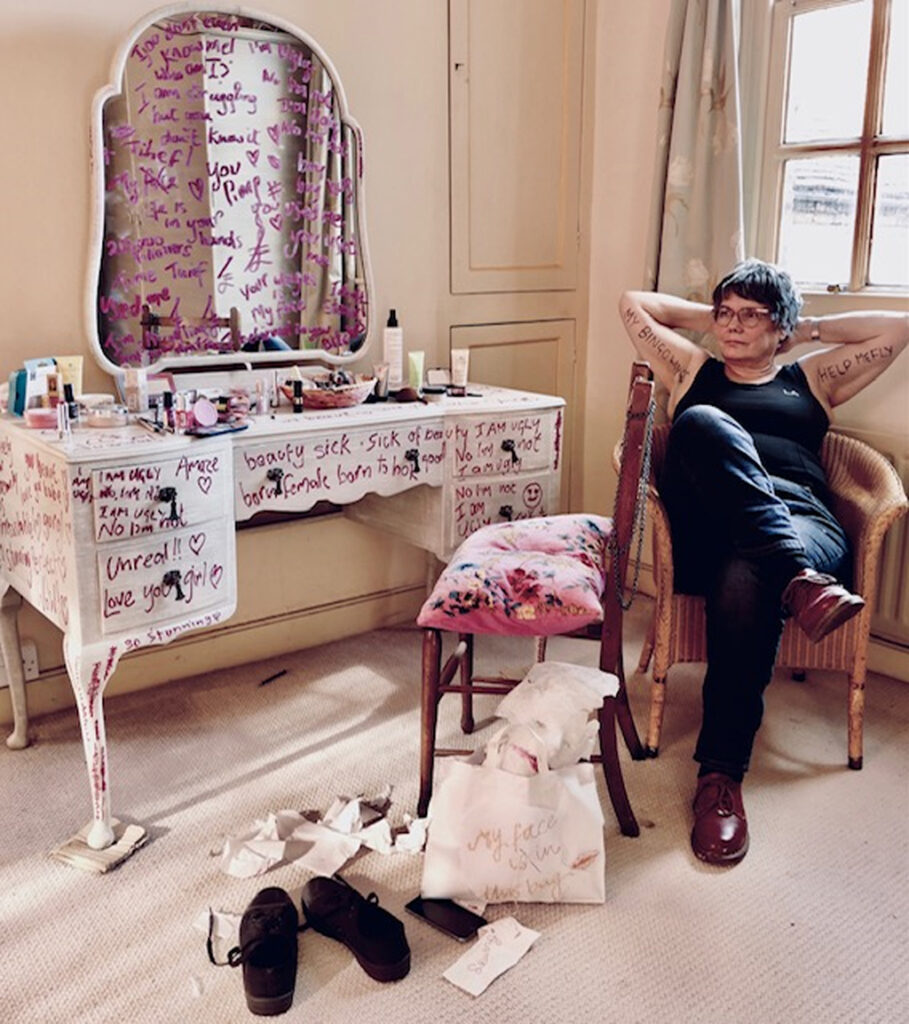
HND ART AND DESIGN

Maggie Evans
Previous Education: Level 3 Extended diploma Art & Design
Destination: HND Art Practice
Sensory Rooms
I was influence by Edward Walker’s lava lamps and initially of the “Psychedelic Movement” and the “Love Generation”. Lava lamps came about in the 60’s and It was the perfect light for modern times,
Walker declared: “If you buy my lamp, you won’t need to buy drugs because the lava lamps are meant to calm and relax people.
This video still screen shot is part of a project which was based on the role of technology in art & design. This is my FMP project, and the work is an illustration of projection utilising handmade lava lamps. The intentions here were to communicate sensory room experiences as an artist medium, for an audience with and without complex health needs, becoming a ubiquitous creative space that promotes the reduction of stress and anxiety. A safe environment where audience become participants, through the physicality of simply being present, interacting through simple movements.

Grace Gajsler
Previous Education: The Academy of Kidderminster
Destination: University of Wolverhampton
Collaboration and Technology
The themes of my project are connections via the internet and creative remixes. Art viewers and critics have their own interpretations of artworks based on their experiences, ideas and tastes, and I wanted to explore my peers’ ideas and interpretations by creating remixes of original pieces I sent to them. This project is a collaboration of ideas from a variety of artists of different media and specialisms with the outcome of a diverse collection of work, and a collaboration between close friends through a personal and public digital connection.

Barbara Miller
One is Too Many
One is Too Many is an installation rooted in a body language crisis created by the use of filter apps that can manipulate and enhance an image to enable the ‘perfect appearance’. For many, this allows a filtered version of reality, one that is hard to find flaws in and that enables them to hide their own insecurities and imagined flaws. The installation is my response to bring about awareness to this practise and its links to a mental health illness known as ‘face and body dysmorphia’. The individuals that have this illness see a distorted image of themselves when looking in the mirror. This illness can lead to depression, self – harm and even suicide in young women. I found this evidence shocking and it was this that gave me the impetus to produce this artwork.
The installation was inspired by Tracey Emin’s ‘My Bed’ and Elaine Shemilt’s “Doppelganger. Two artists that challenge socio-political and feminist issues as part of their practise.
My intention is to confront the viewer and challenge this practise that pressurizes young women to conform to society’s obsession with beauty.
The main brief for this project was that it should be conceptual, where the idea involved takes precedence over the aesthetics of the final piece.
One of the principles of conceptual art is to break away from consumerism and capitalism and to achieve this I used paper in all my experiments; Paper is a low grade and throwaway material. My experiments involved trying various drawing techniques, making face masks and distorting images to suggest human fragility. It was through this process of experimentation that ideas emerged.
My aim through my installation is to invite the viewer to interact by questioning, connecting and interpreting and to evoke feelings about gender inequality and to realise that the true cost of beauty is not through money but through the cost of women’s mental wellbeing.

Steve Sheasby
Previous Education: Foundation Certificate in Art and Design
Destination: Independent practice
Word Room
“Word room” is a concept that is intended to reflect many individuals’ state of mind given the current worldwide Coronavirus pandemic.
Never in living memory has our society faced such a threat to our personal freedoms and mental well – being, I therefore wanted to create a concept that captured some of these anxieties.
So, I started to think of our living spaces and how we felt about them pre – pandemic, i.e., places of refuge of safety and places where we could relax and rest.
Our living spaces are almost like the spaces that occupy our heads, a private space where our true self exists.
So how has the pandemic affected our true self spaces?
It has made us fearful of acting in the ways in which we are so used to in today’s society, it has threatened our very mortality, and it has filled our heads with words that would have meant nothing in the past. Words that now fill us with caution, distrust, and fear.
Our worlds have been forcibly shrunk to the spaces in which we live.
It is the 4 walls of reality.